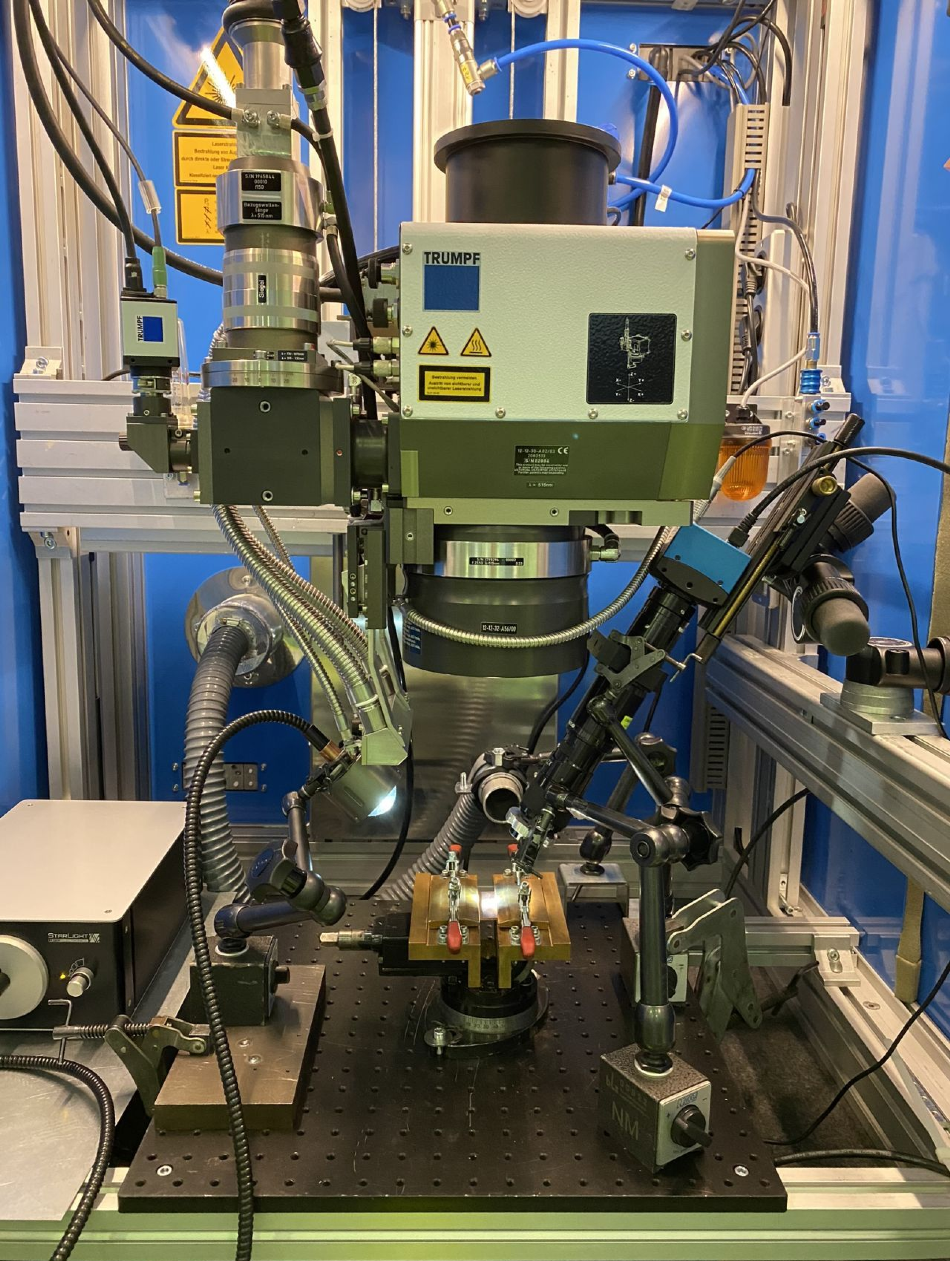Bayerisches Laserzentrum GmbH or simply "BLZ" is an independent, non-profit research association based in Erlangen, Bavaria, that aims to open new fields of application for photonics and laser technology through research, development and knowledge transfer. Acting as a link between the scientific community and industry, BLZ serves as an engineering partner, trainer, solutions provider, and a developer and manufacturer of application-specific optical systems and components.
 Experimental setup for remote laser beam welding of metallic materials
Experimental setup for remote laser beam welding of metallic materials
Florian Kaufmann, who works in BLZ's Process Technology Metals department, is active in application-oriented research. “In applied research, we work closely with industrial partners and the Chair of Photonic Technologies at FAU Erlangen-Nürnberg. We are primarily investigating laser processes for copper and aluminum. Also, there is considerable research in the area of e-mobility, as welding is required for the contacting of battery cells and the manufacture of power electronics for battery-electric vehicles."
Research conducted by BLZ on laser-based processes requires the continuous monitoring of processes such as welding, cutting, soldering and generative manufacturing. To accomplish this, BLZ acquired a Mikrotron MotionBLITZ Eo Sens® mini2 high-speed memory camera in 2020. Compact yet powerful, the MotionBLITZ Eo Sens® mini2 is ideal for confined lab spaces. In fact, the MotionBLITZ Eo Sens® mini2 replaced a previous generation of a Mikrotron camera that BLZ had deployed in an identical test system, therefore upgrading that system to perform more extensive studies. Specific research targeted the welding of aluminum and copper materials, remote welding of ferrous and non-ferrous metals, laser material processing with wavelengths in the visible range, and soldering microelectronic components.
Operating at a resolution of 1696 x 1710 pixels, the MotionBLITZ Eo Sens® mini2 is able to detect any defects -- so-called seam inhomogeneities -- such as weld spatter, pores and cavities that may occur during laser processing. It captures more than 200,000 frames per second allowing the operator to freeze-frame any action. By the camera identifying how and when these defects arise, countermeasures can be put into place to remedy errors. For example, splashes occurring in a powder bed during additive manufacturing can be detected and the process adjusted accordingly. Another instance would be the precise visual capture of the characteristics of a weld seam, including its melting dynamics and material evaporation, during a steam plasma torch operation.
Versatile as it is powerful, the MotionBLITZ Eo Sens mini2 can be installed either directly in the beam path or on the outside of a machine BLZ is testing. Depending on the technology, the camera can also be placed on a tripod or robot arm in order to document research findings. Due to its internal memory, the use of the camera is possible without connection to any notebook or PC. Three seconds at full resolution and speed can be recorded without being dependent on an extensive experimental set-up. In addition, the Gigabit Ethernet interface allows an operator to control multiple cameras from any standard Notebook/PC over a distance of up to 100 meters.
“The recordings from the Mikrotron camera analyze process stability. We want to understand how errors occur in the various applications and then use this knowledge to avoid them," said Kaufmann. For example, there is increased spatter formation in copper welding, especially in laser beam welding with conventional laser beam sources, that emit approximately 1 µm in the infrared spectrum. This has to be recognized immediately, because in the worst case it can lead to product rejects or damage to a component."
Great potential is seen in laser beam sources of visible wavelengths, which are currently taking the development step towards the high-power class. BLZ currently has a laser system from Trumpf GmbH that offers 3 kW output power at 515 nm wavelength.
"The investigation of the influence of the changed processing wavelength on the process result in laser beam welding of copper is an essential area in which we want to use the Mikrotron camera system."
While the system configuration currently limits the duration of a camera recording to 1.5 seconds, longer observation times can be selected. For example, when soldering, images are recorded for up to 10 seconds, but this is accompanied by a smaller image section. Depending on the issue, camera recordings are either evaluated subjectively or by using an algorithm.
"Overall, we are very satisfied with the system," says Kaufmann.